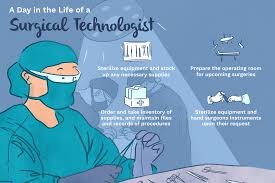
In today’s digital age, documents come in various formats, but PDF (Portable Document Format) stands out as one of the most reliable and universally accepted formats. From e-books to resumes, contracts to user manuals, PDFs are everywhere. But is a computer PDF right for your needs? This question is increasingly important, particularly as more industries shift toward digital document management. In this comprehensive guide, we will help you understand the benefits, use cases, and considerations that make PDFs an excellent choice for various applications.
What is a Computer PDF?
A computer PDF is a file format developed by Adobe that allows users to capture documents, text, and images in a fixed-layout format that remains consistent regardless of the operating system or device used to view it. PDFs are designed to present information in the same way, no matter where they are opened, ensuring your documents retain their intended design and formatting.
PDFs are particularly useful for documents that need to be printed or shared between users on different systems. The versatility and reliability of the PDF format make it a popular choice for many businesses and individuals.
Advantages of Using a Computer PDF
1. Platform Independence
One of the primary advantages of a computer PDF is its platform independence. Whether you are using a Windows PC, macOS, or Linux, a PDF will look exactly the same on every device. This is not always the case with other document formats like Microsoft Word or Excel files, which can sometimes have formatting issues when opened on different systems.
Additionally, PDFs can be opened using a wide variety of software programs, including free options like Adobe Acrobat Reader or web browsers. This flexibility makes it easy for anyone to access your document without having to worry about compatibility issues.
2. File Security
PDFs offer robust security features, which can be important when you are dealing with sensitive information. With PDFs, you can:
- Encrypt documents to ensure only authorized users can open or edit them.
- Set permissions to restrict printing, copying, or altering the document.
- Add digital signatures for authentication and verification purposes.
For businesses, these security features make the PDF format ideal for sending contracts, legal documents, and other confidential materials. You can be confident that your document will be safe from unauthorized access or tampering.
3. Compression Capabilities
Despite the high-quality graphics and content that PDFs can include, they are often highly compressed, making them smaller than other file types. This is especially beneficial when you need to send documents via email or upload them to cloud storage services with file size limitations. The smaller size of PDFs reduces upload times and allows for faster sharing without compromising on quality.
4. Consistent Formatting
The most significant reason people choose PDFs over other file formats is their consistent formatting. Whether you are sending a resume to a potential employer or sharing a presentation with colleagues, you can be sure that the layout, fonts, and images will appear exactly as you intended. Unlike Word documents, which can change depending on the version of software or device used, a PDF maintains its original formatting across all platforms.
5. Easy to Create and Convert
Creating a PDF file is simpler than ever before. Most modern software, including word processors, spreadsheets, and design programs, offer built-in options to export documents as PDFs. Additionally, there are many online tools available that can convert almost any file format into a PDF.
These tools allow users to convert:
- Microsoft Word documents
- Excel spreadsheets
- PowerPoint presentations
- Images
- Webpages
In just a few clicks, you can generate a polished and professional PDF that can be easily shared with others.
6. Rich Media Capabilities
PDFs are not just static documents; they also allow for rich media content. You can embed videos, audio, and interactive elements such as hyperlinks and buttons into a PDF. This makes PDFs a great option for digital marketing materials, product catalogs, or instructional guides that need to engage readers with more than just text and images.
When to Use a Computer PDF
Now that we’ve covered the advantages, it’s important to understand when a computer PDF is the best choice for your specific needs.
Business Documents
PDFs are ideal for sharing business-related materials such as contracts, invoices, reports, and presentations. Thanks to their security features and consistent formatting, you can ensure that the recipient will see the document exactly as you intended and that sensitive information will remain protected.
Academic and Research Papers
For students and researchers, PDFs are the preferred format for submitting assignments, dissertations, and journal articles. The fixed format ensures that figures, tables, and citations remain intact, and the compact size makes them easier to share and store.
E-Books and Manuals
PDFs are an excellent choice for e-books, instruction manuals, and product guides. The read-only nature of the format ensures that the content remains unchanged and can be easily printed or read on different devices without any formatting issues.
Marketing Materials
For companies that want to create brochures, product sheets, or catalogs, PDFs offer the flexibility to include rich media and interactive elements. You can also distribute these materials online or via email, knowing that they will look professional and be easy to open by potential clients.
Legal Documents
The PDF format is widely accepted in legal contexts because of its security features and ability to maintain authenticity. By using PDFs for contracts, affidavits, and other legal documents, you can add digital signatures and encryption to ensure that the document is both valid and secure.
Disadvantages of Using a Computer PDF
While PDFs are incredibly useful, they do come with a few disadvantages that are worth mentioning.
Editing Restrictions
Once a document is saved as a PDF, making changes can be difficult. While there are tools available to edit PDFs, such as Adobe Acrobat, many free PDF readers do not allow for edits. If you need to make frequent changes to a document, you may need to return to the original file format before saving it again as a PDF.
Complexity in Forms
Although PDFs are capable of handling forms with interactive fields, creating fillable forms in a PDF can be more complex than in other formats like Word or Excel. This can sometimes require specialized software and skills to implement properly.
Conclusion: Is a Computer PDF Right for You?
Ultimately, choosing whether or not to use a computer PDF depends on your specific needs. If you are looking for a universal file format that ensures consistent formatting, offers strong security, and allows for easy sharing, then a PDF is an excellent choice. However, if you need to frequently edit or modify your documents, it may be worth considering other formats for the creation stage before converting to PDF for distribution.






2 thoughts on “Is a Computer PDF Right for You?”